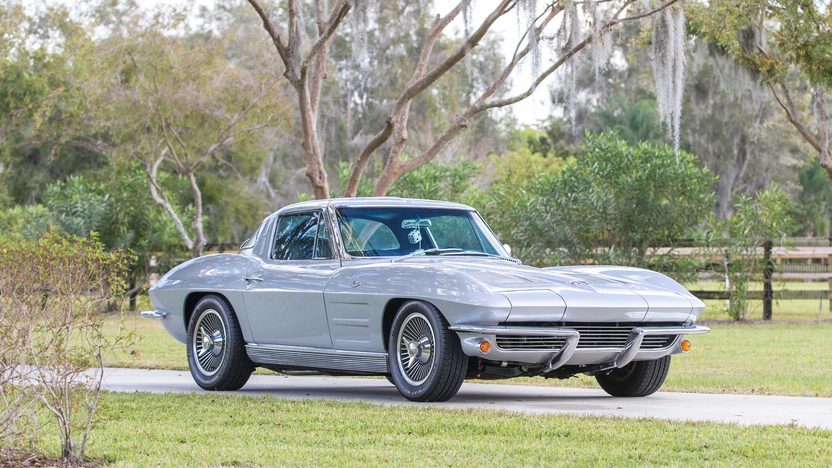Split Decision: The 1963 Corvette’s special allure
Bill Mitchell’s signature styling element for the second-generation Chevrolet Corvette’s first year – the coupe’s rear window divided by a center post – aggravated Zora Arkus-Duntov, who disapproved of its hampered visibility.
Notwithstanding Zora’s dismay over the GM design chief’s imposed flourish, the so-called split window model, which lasted only one year, has become a particularly sought-after Corvette. It is routinely priced 50 to 100 percent above comparably equipped ’64s. Perhaps the sole instance where a rear window has been the subject of a widely available wall poster, its distinctive design deserves the adjective “iconic.”
There is, however, a way to enjoy the exclusivity of owning a split window ‘Vette at a more reasonable price: Buy one equipped with a Powerglide. They don’t turn up very often; only 2,621 of the 21,513 ’63 Corvettes were built with the two-speed automatic transmission, making it almost as rare as the high performance 360-horsepower fuel injection engine (2,610 made).
Collectors’ disdain for the Powerglide isn’t justified by a lack of performance. The famed Chaparral racecars used a modified Powerglide to great effect and success, amazing competitors and spectators with the transmission’s ease of use and performance. And it’s logical that coming generations of collectors will have had much less exposure to manual transmissions, which could make the automatic a more desirable choice.
While there are exceptions to every rule (more about that later) a good split window ’Vette with Powerglide is reliably under $100,000, something that cannot be said of most ’63 Sting Ray coupes with three pedals.
At its 2015 Indianapolis auction, Mecum Auctions sold a high-quality example – an older cosmetic restoration – with desirable options like side exhausts, power steering and power brakes for a healthy but still reasonable $86,400. Having the base 250-horse 327 cid engine kept the price down.
Mecum sold a Powerglide split window coupe at its Kissimmee, Fla., auction this year, powered by the satisfying 300 hp engine and also well equipped with options like power steering, power brakes, power windows and a Wonder Bar signal-seeking radio. Represented as having a numbers-matching engine, and owned by the seller since 1970, it was in better than showroom condition. Even with an older restoration, it brought $92,400.
Mecum had a more modestly priced Powerglide split window at Kissimmee in 2015, also with the 300-horse engine and power brakes, power steering and the Wonder Bar radio. It also had the extremely rare air-conditioning option – only 278 were so equipped in ’63. Finished in Sebring Silver, it was an older, mellowed restoration and brought a relatively modest $77,760.
The exception to the rule? The Sting Ray from Kissimmee 2015 was sold at RM Sotheby’s Arizona auction this past January for a generous $126,500.
Contrast those values with a 250 hp air-conditioned example at the Auctions America Auburn sale in May, earlier this year. It was an older superficial restoration, now showing more than a few flaws and shortcuts. It came without any representation of the powertrain’s originality and still brought $78,100.
There is opportunity where conventional thinking follows the accepted wisdom. A Powerglide-equipped split window ’63 coupe may be one of those opportunities to benefit by taking a different path.


